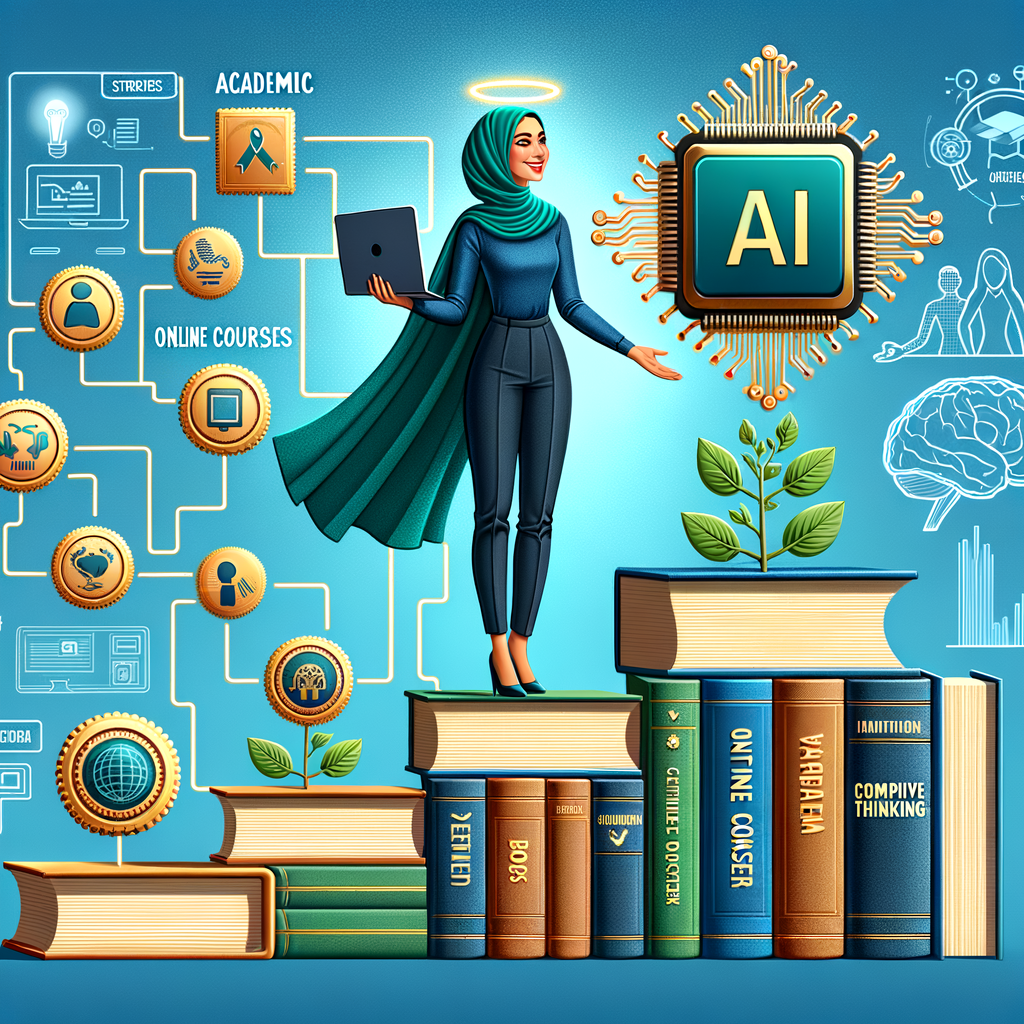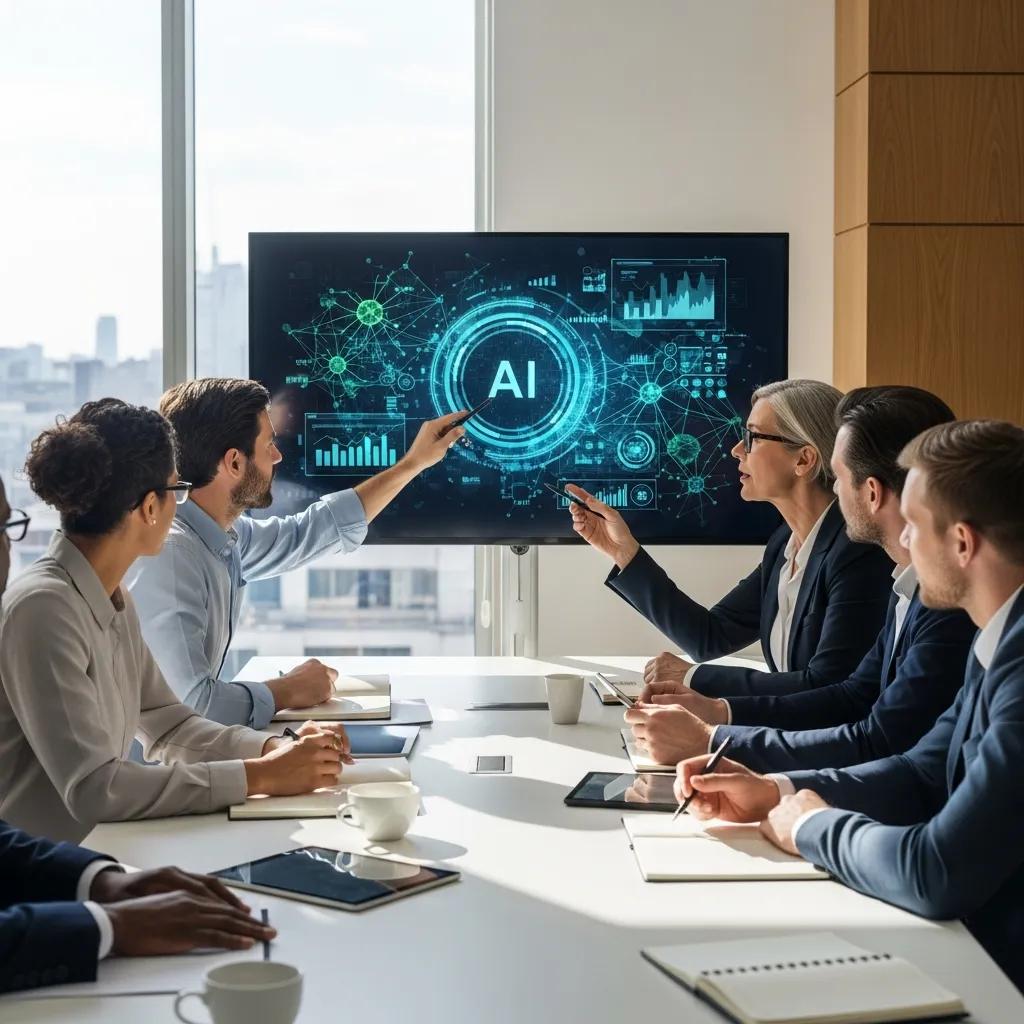Artificial intelligence is transforming industries and the job market. One exciting new opportunity is the Certified Chief AI Officer (CAIO). This guide explains how to become a CAIO, covering necessary skills and certifications.
Understanding the Role of a Chief AI Officer
A CAIO leads an organization’s artificial intelligence strategy, implementation, and governance. They connect technical teams with business leaders. CAIOs ensure AI initiatives match company goals.
Key CAIO responsibilities include developing AI strategies and managing projects. They also manage AI teams, ensure ethical AI use, and communicate AI’s value. They stay updated on advancements in artificial intelligence and machine learning.
The CAIO role now includes driving digital transformation and fostering innovation. This also involves organization-wide AI adoption. A Certified Chief AI Officer develops AI programs and applies advanced technology, especially generative AI (gen AI).
Essential Skills for Aspiring Chief AI Officers
A CAIO needs technical expertise, business acumen, and leadership qualities. These attributes are essential skills for aspiring CAIOs.
Technical Skills
A solid artificial intelligence and related technology foundation is crucial. While coding expertise is helpful, it isn’t essential. The Chief AI Officer uses AI technologies and artificial intelligence officer experience.
Important technical knowledge includes machine learning algorithms, deep learning, and natural language processing (NLP). Data science, data analytics, and cloud computing platforms are important as well.
Knowing tools like TensorFlow, PyTorch, and IBM Watson is beneficial. Big data and advanced data analysis expertise is a plus. Chief AI Officers use their software engineering background in agile software engineering.
Business Acumen
CAIOs understand how AI drives business value and drives business decisions using business intelligence and data management.
This includes strategic thinking, financial management, and project management. Risk assessment, and understanding industry challenges are also essential for operations management and technology management.
Leadership and Communication Skills
Leading AI projects requires managing and motivating teams and communicating with stakeholders. Change management, ethical decision-making, and collaboration are vital. A CAIO will be responsible for overseeing artificial intelligence and machine learning.
Continuous learning and staying current with the latest AI trends are key. Data privacy, cyber security, and ensure compliance using a risk management framework for responsible AI will be important. A CAIO needs senior executive level management techniques.
Educational Pathways to Become a Certified Chief AI Officer
Several educational paths can build a foundation for becoming a Certified Chief AI Officer. Here are some of them.
Formal Education
Many CAIOs have advanced degrees in areas like computer science and artificial intelligence. Data science, or a business administration (MBA) with a technology focus, can also prepare aspiring CAIOs.
Professional Certifications
Certifications validate AI skills. Options include the Certified Chief AI Officer (CCAIO™) from the C-Suite Institute. Cloud providers also offer certification training. This continuing education program prepares you to manage a department that oversees building AI systems within the data strategy and the risk management. The artificial intelligence officer and intelligence officer use business process and management framework within an AI program to drive ai.
AWS Certified Machine Learning – Specialty, Google Professional Machine Learning Engineer, and IBM AI Engineering Professional Certificate are options. These credentials improve job market competitiveness.
Executive Education Programs
Universities offer AI leadership executive education programs. Northwestern’s Kellogg School has an AI and Digital Transformation program. Wharton provides a Leadership Program in AI and Analytics. MIT offers a program for senior executives. These enhance AI leadership insights. Executive leadership programs show a chief ai officer how to best lead their teams and programs in an ever changing and evolving technology field.
Gaining Practical Experience
Practical experience supplements education and certifications. Real-world practice in ai implementation and enterprise data systems is crucial.
Start with AI Projects in Your Current Role
Look for chances to apply AI in your current organization’s data. Propose solutions for business challenges and collaborate on data science and machine learning projects. Champion AI adoption within your team or department.
Participate in AI Competitions and Hackathons
Events like Kaggle competitions allow skill application and networking opportunities. Hackathons often feature projects focused on big data and artificial intelligence technologies.
Contribute to Open Source AI Projects
Open source projects build practical skills. Contributing to open source shows your skills to employers. Many open source AI projects focus on new ai technologies.
Seek Mentorship from Experienced AI Leaders
Experienced mentors provide valuable advice and insights into navigating challenges and finding opportunities. Find a mentor already working as a CAIO or a similar AI leadership position. An experienced CAIO can teach you the ins and outs of a successful program. They can also assist you with management, especially during large data transitions to AI.
Staying Updated in the Fast-Paced World of AI
The artificial intelligence field changes quickly. Certified Chief AI Officers must keep up with trends. AI programs, AI governance, and the latest ai technologies require continuous learning and a continuing education commitment. Continuing education and technology management courses can ensure compliance with evolving requirements. This also involves understanding data strategy.
Continuous Learning
Commit to continuous learning with online courses and workshops. Stay informed with research papers and industry publications. This is a key asset for any chief data officer.
Join Professional Networks
Networks keep you updated and offer job opportunities. Organizations like the AI Leadership Institute provide important industry updates and senior executive support.
Other professional organizations for the artificial intelligence officer include the Association for the Advancement of Artificial Intelligence (AAAI). The IEEE Computer Society also has AI groups. This officer certification helps the artificial intelligence officer stay up-to-date. Chief data officers must keep current with the fast pace of technology change and this certification can assist in staying on the forefront.
Follow AI Thought Leaders and Publications
Podcasts and newsletters offer timely insights. Using AI at Work podcast covers AI business applications. Prompt Vault Studio provides prompt resources. AI Smartcuts focuses on practical application and software engineering within an ai project or data transition.
Ethical Considerations for Chief AI Officers
Certified Chief AI Officers need to use AI responsibly. This includes addressing AI bias and fairness, plus ensuring compliance.
They manage teams involved in data privacy, cyber security, and building ai systems to ensure compliance. They must manage expectations of program takes. Chief data and ai officers work with project management in AI projects for operational efficiency and advanced technology utilization.
CAIOs consider data privacy, security, and transparency of AI systems. They examine the societal impact of AI projects. Courses on generative AI for business transformation address ethical implications. Continuing education on ai governance and ensuring compliance is a valuable key asset. It assists certified chiefs in project management and strategic initiatives, from develop ai strategies to business process automation, ensuring compliance in these ai initiatives and compliance with evolving laws around building ai systems.
Career Progression and Opportunities
The CAIO career path offers diverse possibilities. CAIOs may move into Chief Technology Officer (CTO) or Chief Digital Officer (CDO) positions. Chief Innovation Officer, AI Consultant, or AI Entrepreneur are further possibilities.
The global AI market is growing rapidly, expanding career options. This growth trajectory promises exciting possibilities for future chief data and ai officers, who often have backgrounds in business intelligence, software engineering, data analytics, and agile software engineering. Senior executive level education and certification programs for executive leadership help prepare individuals for leadership positions focused on driving business success through the application of big data and ai technologies. Data management within organizations data is crucial.
FAQs about How to become a Certified Chief AI Officer
How to become a chief artificial intelligence officer?
Becoming a chief artificial intelligence officer typically requires a strong background in AI, data science, and business leadership. Gaining practical experience through AI projects, certifications, and leadership development are key steps. Staying updated with current AI trends is essential.
How much does a chief AI officer make?
Chief AI officer salaries range from $200,000 to over $500,000 annually, varying by company size, location, and experience. Many positions also offer bonuses and stock options. This key asset has great financial earning potential. This can also lead to positions focused on ai implementation of enterprise data to ensure the organization’s data drives growth. Organizations often establish artificial intelligence programs that incorporate generative AI and advanced technology, including advanced data, in this growth.
How do you become AI certified?
Several paths lead to AI certification. Specialized certifications are offered by organizations like the C-Suite Institute. Cloud providers such as AWS and Google provide certification programs. AI-focused university programs are another option. Practical examinations often accompany coursework. The cdaio program, an online program, offers a certificate program.
Is it worth getting a certificate in AI?
An AI certificate demonstrates expertise and commitment, providing an advantage in the job market. It is particularly relevant for leadership aspirations in AI. Combining certifications with practical experience and continuous learning maximizes career outcomes. Executive leadership within artificial intelligence can gain from certification training and program preparations to develop ai strategies using management techniques for strategic thinking. It is important for these AI programs and artificial intelligence projects to be aligned with data privacy and data security policies to develop ai programs responsibly.
Wrapping Up Your AI Leadership Journey
Becoming a Certified Chief AI Officer is a journey. It combines technical expertise, business acumen, and leadership skills. Continuous learning, ethical conduct, and staying ahead of AI trends are essential. This online program provides certificate programs that can prepare an artificial intelligence officer for senior executives.
The CAIO role offers vast opportunities. As AI changes industries, CAIOs will be increasingly important. Investing in education, practical experience, and AI trend awareness are key to success in this field. Artificial intelligence, machine learning, and data science experience will greatly benefit you as a CAIO.
Certified Chief AI Officers lead organizations into the future, using AI responsibly to drive business growth and increase operational efficiency. Data analytics and business data understanding are a critical aspect of this job.






